www.GANCARZ.com
Travel Photos
Pearl Harbor

One of the two bells recovered from the U.S.S. Arizona is displayed in the visitors center. The other is on display at the University of Arizona.
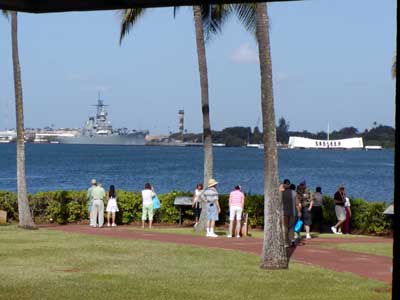
The view of the harbor from the visitor's center. The Arizona memorial is to the right and the U.S.S. Missouri is to the left.
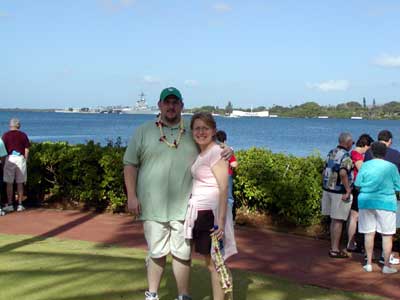
The visitor's center also had a museum which I found very interesting. They seemed to really try to show both sides and not vilify the Japanese. I was really struck by two things. First, the harbor itself was a lot smaller than I expected. It is very hard to visualize all the ships we had in there. And second, I was surprised by the number of errors in judgement made that could have prevented a lot of the damage.
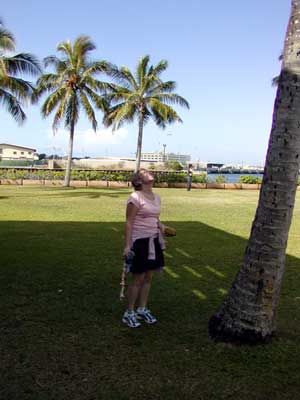
We found a coconut laying on the ground, so I had Sue clown around like it fell and almost hit her.

Pearl Harbor is still an active U.S. Military Base, so we were ferried out to the memorial by the Navy.

This platform marks the forward position of the Arizona.
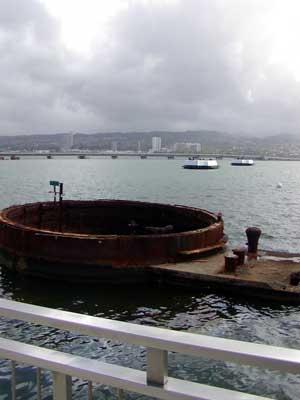
I believe that this was part of the platform where the Arizona was docked during the attack, and not actually part of the ship.
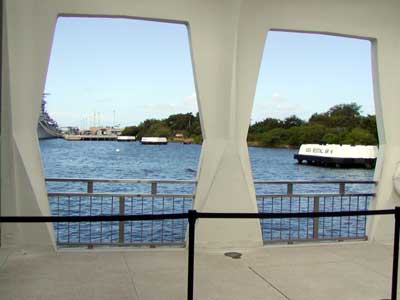
In the distance are platforms marking the location of other ships that were sunk in the attack. Unlike the Arizona, those ships were either repaired or salvaged.

While the Arizona is no longer in commission, as a special tribute to the ship and her lost crew, the United States flag flies from a flagpole that is attached to the severed mainmast of the sunken battleship.
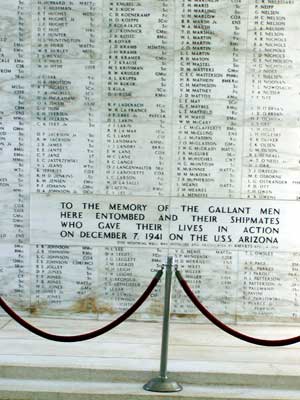
At the end of the Memorial is the shrine room, where the names of those killed on the Arizona are engraved on the marble wall.
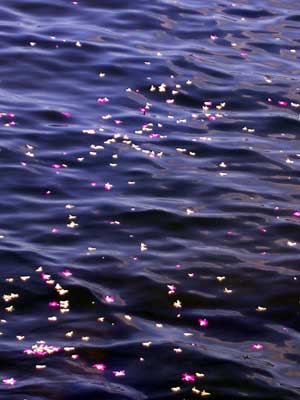
Several people from our group tossed our flower leis into the harbor in tribute of the 1,100 crewmen who lost their lives on December 7, 1941. In addition to being a shrine, the U.S.S. Arizona is a tomb to most of those crewmen and by federal law can not be salvaged or dived on.

Oil still leaks to the surface from the Arizona. Local legend says that when the last surviving member of the Pearl Harbor attacks dies, the leaking will stop.
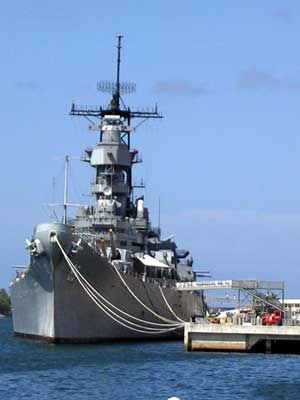
Across from the Arizona Memorial is the U.S.S. Missouri. Together, they are appropriate bookends for the U.S. envolvement in World War II. The Attack on Pearl Harbor initiated U.S. entry into the War, and the the Japanese surrender occured on the Missouri, signifying the end of the War.
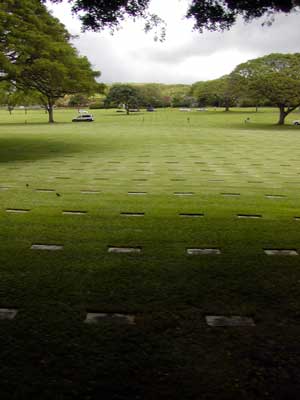
After leaving Pearl Harbor, we went to Punch Bowl Cemetery, where many of the fallen from Pearl Harbor were buried. The small stone markers replaced the wooden crosses that formerly marked the grave sites. Unfortunately, the crosses had to be removed because of the termite problem in the islands.
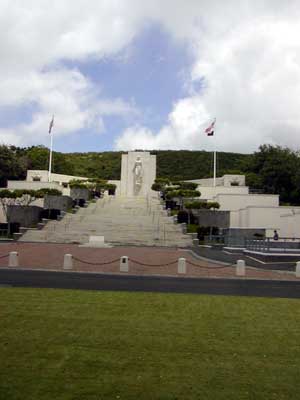
The Hawaiian name for this cemetery is Puowaina, or the Hill of Sacrifice. This all military cemetery has provided a final resting place for armies and their kings since before the time of King Kameamea. Many secret royal burials took place in this crater. This cemetery was dedicated September 2, 1949 to honor those men and women who have fallen in battle while fighting for our country. More than 38,000 are buried in this memorial park, including victims of World War II, the Korean and Vietnam Wars. Unfortunately, tour buses are no longer permitted to stop in the cemetery because of the damage tourists have caused.
Last Updated: 7/30/06